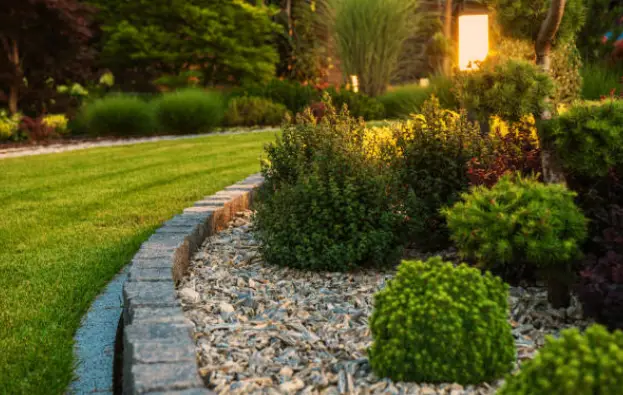Growing vegetables, herbs, and flowers in raised garden beds is becoming more and more common. In comparison to conventional in-ground gardens, they offer numerous advantages, such as improved drainage, less weed growth, and reduced back strain from bending over. But one of the greatest benefits of raised beds is that they simplify the process of creating a functional garden plan.
Raised beds allow you to create an aesthetically beautiful design and maximize your planting space by allowing you to modify the size, shape, and layout. It might be a little intimidating to choose the ideal plant arrangement for growth, maintenance accessibility, and aesthetic appeal. This tutorial will lead you through every important factor to take into account when planning the ideal raised bed garden layout.

Factors to Consider
Before you start sketching out a garden plan, there are several key factors to take into account:
- Available space: Measure the area where you want to place the raised beds and take note of any obstructions like trees or buildings that could limit bed size or shape.
- Sunlight exposure: Most edible plants need at least 6 hours of direct sunlight per day. Note which areas get full sun versus partial shade.
- Access: Leave enough space between beds and on the perimeter for maneuvering wheelbarrows, accessing all sides for weeding, harvesting, etc.
- Aesthetics: The layout should be visually appealing and cohesive with the overall landscape design.
Choosing a Layout
Pattern There are many potential layout patterns for arranging your raised garden beds. Some of the most common include:
Row Layout In this classic design, beds are set out in parallel rows, either square or rectangular, with walkways connecting the rows. Although it makes the most sense for larger gardens and maximizes planting space, the lengthy rows can be unsightly and make it challenging to harvest the intermediate sections.
BlockStyle Pattern
This design divides the garden into several pieces by placing the beds in a checkerboard or block pattern that makes it simple to reach the center of each block. Although it seems spectacular, it takes up less room than rows.

Circumstances
The beds are curved in this pattern to form intriguing spiral, circular, or meandering designs that draw the eye and produce a striking focal point in the landscape. When compared to alternative designs, it tends to use space inefficiently.
In addition, raised beds look great when incorporated into formal knot garden designs, the classic potager garden, or when planted in between perennials.
Size, Shape, and Configuration Considerations Once you’ve chosen a general layout pattern, you’ll need to decide the specific size, shape, and arrangement of each individual raised bed.
Size
- Standard beds are typically 3–4 feet wide to allow reaching across from each side.
- Narrow beds down to 1 foot wide against walls/fences to maximize space usage.
- Limit length to no more than 8–10 feet for easy access all along the sides.
Shape
- Rectangular beds maximize planting space.
- Add curves or circular shapes for visual interest.
- Triangular beds can fit into odd corner spaces.
Configuration
- Higher beds (12″+ tall) are wheelchair accessible from the sides.
- Lower beds (6–12″ tall) make it easy to reach in while standing.
- Stagger alternating beds for more walkway access to the centers.
Other Layout Tips
Plants to Bed Height: Short plants like lettuce and radishes can go in the front, taller crops like tomatoes and corn in the back beds.
Intensive Planting: Take advantage of vertical space by training vines up trellises. Use succession planting and intercropping to maximize yields.
Triple-Threat Plants: Group plants in each bed by these 3 types:
Anchor Plants: Taller plants like tomatoes that define the structure
Filler Plants: Medium-height fillers like spinach and broccoli
Spillers: plants that trail over the edges, like thyme and strawberries
Consider Sunlight: Orient rows, blocks, or centerpiece beds north to south so no plants cast too much shade on others.
Rotate Beds: Alternate between heavy feeders like tomatoes and light feeders like root crops in each bed each year to avoid depleting nutrients in one area.
Color and texture: Mix contrasting colors, heights, and textures of plants to create visual interest, not just a sea of green.
Focal Points: At the end of each row or at the garden’s center, add an inviting focal point like a sculpture, bench, arbor, or burst of vibrant flowers.
Incorporate Fun Elements: Use trellises or obelisks for vertical interest or raised berms and mounds to slope terrain. Edge beds with brick, stone, shells, and recycled items.
Consider Walkways: For paths, use stone, gravel, mulch, pavers, or paving stones to match the garden’s aesthetic and prevent weeds and erosion while allowing drainage. Make paths at least 18″ wide. Install stepping stones for walkways through garden beds.
Choose Appropriate Materials: Wood, metal, stone, concrete, or composite material all work well for raised beds. Pick affordable, durable materials that complement the landscape style.
Raised bed garden designs can be as formal and structured as they are whimsical and organic; it all depends on your tastes, available space, and the types of plants you choose. A layout that is both exquisite and incredibly practical can be created with a little imagination and careful design.




